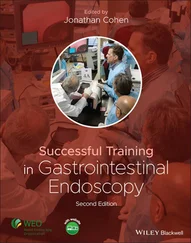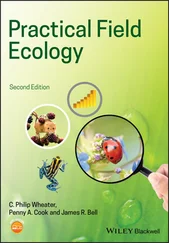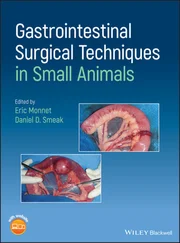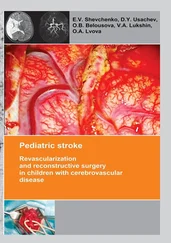Societal guidelines must be adapted to specific national legislation and institutional protocols. Once established, sedation and general anesthesia protocols must be controlled subjected to constant quality monitoring.
See companion website for videos relating to this chapter topic: www.wiley.com/go/gershman3e
 FURTHER READING
FURTHER READING
1 American Academy of Pediatrics, American Academy of Pediatric Dentistry, Coté CJ, Wilson S, and the Work Group on Sedation. Guidelines for monitoring and management of pediatric patients during and after sedation for diagnostic and therapeutic procedures: an update. Pediatrics 2006, 118, 2587–2602.
2 ASGE Standards of Practice Committee. Modifications in endoscopic practice for pediatric patients. Gastrointest Endosc 2014, 79(5), 699–710.
3 Beach ML, Cohen DM, Gallagher SM, Cravero JP. Major adverse events and relationship to nil per os status in pediatric sedation/anesthesia outside the operating room: a report of the Pediatric Sedation Research Consortium. Anesthesiology 2016, 124, 80–88.
4 Biber JL, Allareddy V, Allareddy V, et al. Prevalence and predictors of adverse events during procedural sedation anesthesia‐outside the operating room for esophagogastroduodenoscopy and colonoscopy in children: age is an independent predictor of outcomes. Pediatr Crit Care Med 2015, 16, e251–e259.
5 Brecelj J, Trop TK, Orel R. Ketamine with and without midazolam for gastrointestinal endoscopies in children. J Pediatr Gastroenterol Nutr 2012, 54(6), 748–752.
6 Chung HK, Lightdale JR. Sedation and monitoring in the pediatric patient during gastrointestinal endoscopy. Gastrointest Endoscopy Clin North Am 2016, 26, 507–525.
7 Gozal D, Gozal Y. Pediatric sedation/anesthesia outside the operating room. Curr Opin Anaesth 2008, 21(4), 494–498.
8 Mallory MD, Travers C, Cravero JP, et al. Upper respiratory infections and airway adverse events in pediatric procedural sedation. Pediatrics 2017, 140(1), e2017–0009.
9 Orel R, Brecelj J, Dias JA, et al. Review on sedation for gastrointestinal tract endoscopy in children by non‐anesthesiologists. World J Gastrointest Endosc 2015, 7(9), 895–911.
10 Saunders R, Struys M, Pollock R, Mestek M, Lightdale JR. Patient safety during procedural sedation using capnography monitoring: a systematic review and meta‐analysis. BMJ Open 2017, 7, e013402.
11 Scherrer PD, Mallor M, Cravero J, et al. The impact of obesity on pediatric procedural sedation related outcomes: results from the Pediatric Sedation Research Consortium. Pediatr Anesth 2014, 25, 689–697.
12 Thomson M, Tringali A, Dumonceau JM, et al. Paediatric gastrointestinal endoscopy: European Society for Paediatric Gastroenterology Hepatology and Nutrition and European Society of Gastrointestinal Endoscopy guidelines. J Pediatr Gastroenterol Nutr 2017, 64(1), 133–153.
13 van Beek E, Leroy P. Safe and effective procedural sedation for gastrointestinal endoscopy in children. J Pediatr Gastroenterol Nutr 2012, 54, 171–185.
14 Wengrower D, Gozal D, Gozal Y, et al. Complicated endoscopic pediatric procedures using deep sedation and general anesthesia are safe in the endoscopy suite. Scand J Gastroenterol 2004, 39(3), 283–286.
5 Pediatric endoscopy training and ongoing assessment
Catharine M. Walsh, Looi Ee, Mike Thomson, and Jenifer R. Lightdale
 KEY POINTS
KEY POINTS
Endoscopic skill acquisition can be accelerated by recently available teaching models including virtual simulators.
Formative and summative direct observational procedural skill (DOPS) assessments are integral.
Use of a contemporaneous record of cases performed and assessment of competence should be mandatory. e.g.. www.jets.thejag.org.uk.
Hands On Courses are a useful adjunct to ongoing training.
Ideally trainers should have been trained in endoscopy training specific to pediatrics.
Achieving proficiency in gastrointestinal endoscopy requires the acquisition of related technical, cognitive, and integrative competencies. Given the unique nature of performing endoscopy in infants and children, its training and assessment must be tailored to pediatric practice to ensure delivery of high‐quality procedural care. This chapter outlines current evidence regarding pediatric endoscopy training and assessment.
Learning to perform endoscopy largely occurs during formalized pediatric gastroenterology training programs of at least two years’ duration. The traditional endoscopy teaching method is based upon the apprenticeship model, with trainees learning fundamental skills under the supervision of experienced endoscopists in the course of patient care. More recently, novel instructional aids have been utilized with the aim of accelerating learning, facilitating instruction, and helping trainees attain base levels of proficiency prior to performing procedures in the clinical environment.
Endoscopy skill acquisition
With regard to learning to perform procedures such as endoscopy, skill acquisition has been described by Fitts and Posner [1] as a sequential process involving three major phases: cognitive, associative, and autonomous. In the cognitive stage, a learner develops an initial mental understanding of the procedure through instructor explanation and demonstration. Performance during this stage is often erratic and error filled, and feedback should focus on correct procedural technique and identifying common errors. Subsequently, in the associative phase, the learner translates knowledge acquired during the cognitive stage into appropriate motor behaviors, tasks are gradually executed more efficiently, and there are fewer errors and interruptions. Feedback during the cognitive stage should aim to help learners self‐identify errors and their associated corrective actions [2]. Finally, with ongoing practice and feedback, the learner transitions to the autonomous stage, where motor performance becomes automated such that the skills are performed without significant cognitive or conscious awareness.
A relatively recent trend towards ensuring both quality of training and patient safety has prompted educators to seek complementary methods of teaching endoscopy to enhance apprenticeship approaches. In particular, magnetic endoscopic imaging has been developed to provide real‐time images that display three‐dimensional views of the colonoscope shaft configuration and its position within the abdomen during an endoscopic procedure [3]. A metaanalysis of 13 randomized studies found that use of magnetic endoscopic imaging during real‐life colonoscopy is associated with a lower risk of procedure failure, reduced patient pain scores and a shorter time to cecal intubation, compared with conventional endoscopy [4]. With regard to training, research indicates that use of an imager may enhance learners’ understanding of loop formation and loop reduction maneuvers [5].
Simulation‐based training provides a learner‐centered environment for learners to master basic techniques and even make mistakes, without risking harm to patients [6,7]. Mastery of basic skills in a low‐risk controlled environment, prior to performance on real patients, enables trainees to focus on more complex clinical skills [6]. Additionally, within the simulated setting, learners can rehearse key aspects of procedures at their own pace, training can be structured to maximize learning, and errors can be allowed to occur unhindered, with the goal of allowing trainees to learn from their mistakes [8].
Читать дальше
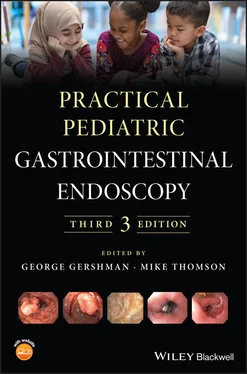
 FURTHER READING
FURTHER READING KEY POINTS
KEY POINTS
